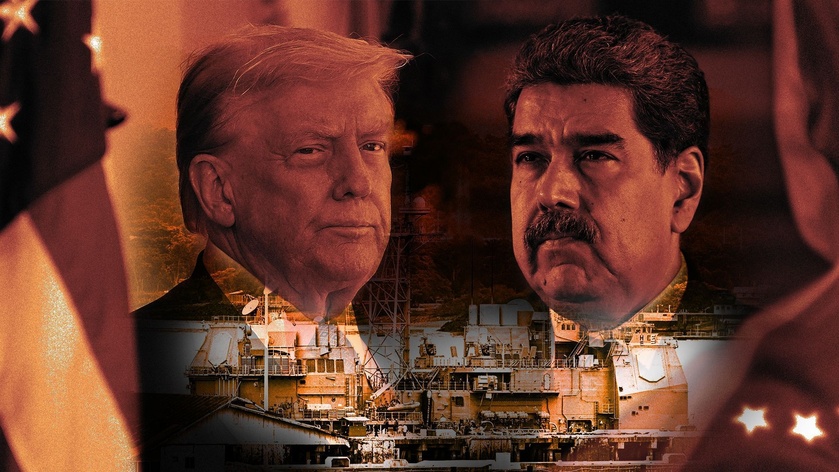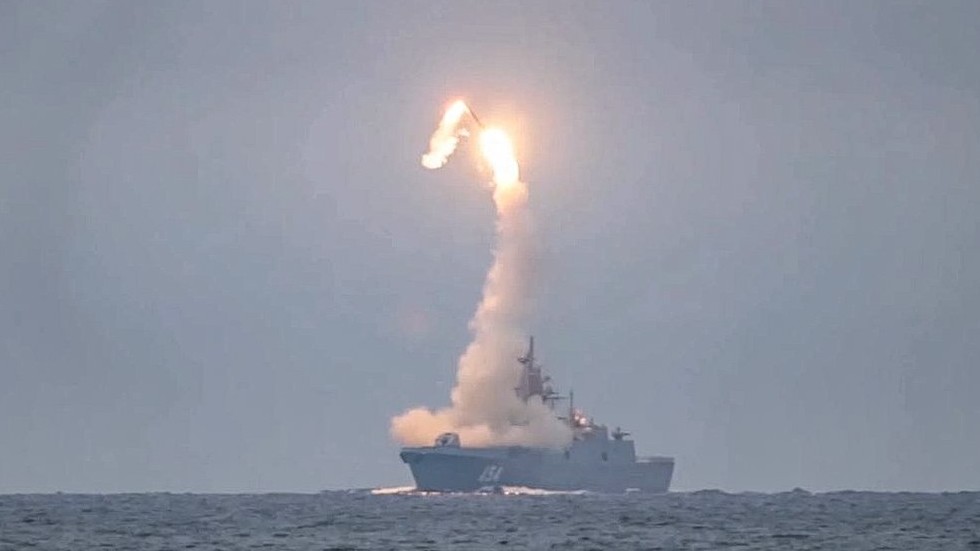The first warship fitted with new Zircon hypersonic missiles is set to begin routine service early next year, the Russian president has said
Putin provides details on Russia’s hypersonic missiles
The first naval vessel fitted with Zircon hypersonic cruise missiles is set to begin its routine combat duty early in January, Russian President Vladimir Putin has revealed. The president made the remarks on Wednesday during a meeting with the country’s top defense officials.
“In early January next year, the Admiral Gorshkov frigate will enter combat service with the latest, I repeat once again, not having any analogues in the world, sea-launched Zircon hypersonic missile systems,” Putin stated.
At the meeting Defense Minister Sergey Shoigu also announced that silo-based Sarmat ICBMs are already being deployed into Russia’s strategic missile forces.
The new hypersonic missiles, officially known as the 3M22 Zircon, have been actively tested over the past few years, after first being announced by Putin back in 2019. The Admiral Gorshkov, a modern missile frigate with Russia’s Northern Fleet, has already performed multiple test launches of the new missiles.
Russia will continue to modernize nuclear arsenal – PutinREAD MORE: Russia will continue to modernize nuclear arsenal – Putin
Still, little is known about the weapon, which is heavily shrouded in secrecy. The projectiles are reportedly able to reach speeds of at least 9 Mach – just over 11,000kph – while retaining the ability to maneuver, making them effectively impossible to intercept. The projectiles can cover a distance of at least 1,500km (932 miles), Igor Krokhmal, commander of the Admiral Gorshkov, revealed early this year.
The new missiles reportedly fit into the standard launch tubes of Russia’s naval vessels, which are equipped with older missiles such as the cruise Kalibr or anti-ship Onix missiles. This compatibility potentially allows any Russian cruise missile-carrying vessel to be fitted with the Zircon. Apart from surface ships, the new missiles are expected to be fitted on certain cruise missile-capable submarines, after the first submarine test-launch of the Zircon performed by the nuclear-powered Severodvinsk late in 2021.
https://www.rt.com/russia/568671-putin-hypersonic-cruise-missiles/
US President Donald Trump confirmed on Wednesday the upcoming start of ground strikes against drug cartel targets in Latin America.
He made the remarks during Christmas greetings to the military.
Trump said the United States was "now going after the land" in its fight against drug cartel targets, noting that drug trafficking by sea was down 96 percent.
The U.S. president also extended special congratulations to the crew of the aircraft carrier USS Gerald R. Ford, currently deployed in the Caribbean.

BEIJING (Sputnik) - China has begun operating the world's first intelligent ultra-large oil tanker powered by methanol, the China Central Television (CCTV) reported on Monday.
The tanker, designed to transport crude oil, was successfully put into operation in the city of Dalian in China's northeastern coastal province of Liaoning, the report said. State-owned company Dalian Shipbuilding Industry Co Ltd independently designed and built the vessel, it added.
The tanker is approximately 333 meters (1,092 feet) long and can carry around 2.1 million barrels of crude oil, the CCTV reported. Designed to produce low emissions and having intelligent control capabilities, the tanker will serve the route to the Middle East, among others, according to the report.
The vessel is powered by a dual-fuel methanol engine, which reduces carbon dioxide emissions by 92% compared to conventional fuel, the CCTV reported. It is equipped with an intelligent ship platform, an intelligent liquid cargo ...
A car bomb has killed a senior General Staff member, officials have confirmed
Source: The Investigative Committee
A Russian general has been killed in a car bomb blast in Moscow, the Investigative Committee has reported.
Officials identified the victim as Lt. Gen. Fanil Sarvarov, head of operational training at the General Staff. According to the statement, an explosive device had been planted beneath the vehicle he was traveling in, and detonated on Monday morning in the southern part of the Russian capital.
The blast also damaged several other vehicles and seriously injured Sarvarov’s driver, media reports stated.
Russian officials said one line of investigation is an assassination carried out by Ukrainian intelligence services, noting that Kiev has previously used explosive devices in targeted killings of officials and public figures.
Last December, a bomb hidden in an e-scooter killed Lt. Gen. Igor Kirillov, commander of Russia’s Nuclear, Chemical, and Biological Defense ...















